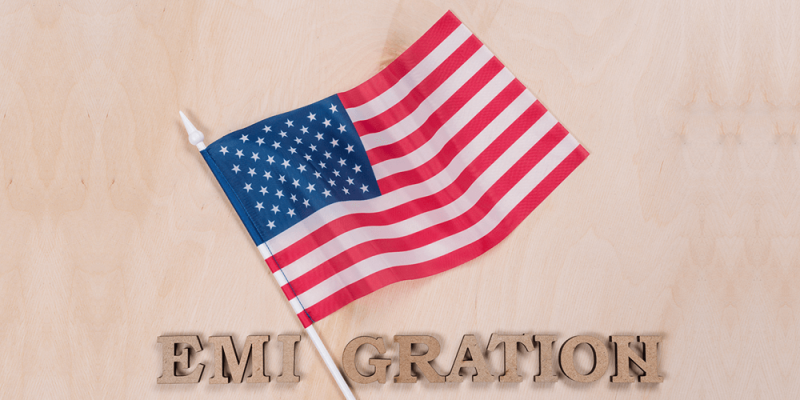Many foreign nationals have sought out the EB-5 Immigrant Investor Program because it is one of the fastest and easiest ways to immigrate to the United States. Over the past two years, many H-1B visa holders have chosen to pursue an EB-5 visa in hopes that the EB-5 process would be a quicker path to permanent resident status in the United States. This strategy proved particularly successful in countries like India. Since the release of the October 2020 Visa Bulletin, however, foreign nationals in this position are beginning to consider the EB-2 and EB-3 visas. This new interest in EB-2/3 visas is due to the significant advancement of important dates in these categories.
In the October 2020 Visa Bulletin, the date for filing (Chart B) jumped from February 1, 2010, to January 1, 2015, for EB-3 and from August 15, 2009, to May 15, 2011, for EB-2. The final action dates (Chart A) for both categories also advanced, but only by a few months. This jump in the final action dates and dates for filing for the EB-2/3 categories have many Indian applicants questioning whether they should continue their EB-5 investment or withdraw their petition and pursue an EB-2 or EB-3 visa.
Why Is This Advancement Significant?
The Department of State uses the final action dates and dates for filing as the two cut off dates for immigrant visa processing. Assuming an applicant’s priority date is current based on Chart B, the applicant can apply for adjustment status with an I-485 petition, I-765 petition, or I-131 petition. Applicants can then receive unrestricted employment authorization and advanced parole for travel within 90 days. This is generally issued with a combined authorization card.
Because the dates for Chart B have advanced so much, many applicants now have a current priority date that allows them to file I-485 adjustment of status applications. EB-2 and EB-3 applicants can then transfer to new employment because of the unrestricted employment authorization, which grants them greater flexibility than they would have had under an extended H-1B visa. While this may seem like the perfect time to pursue an EB-2 or EB-3 visa, there are still several factors that applicants should consider before abandoning their EB5 investment.
Chart A Advancement Not As Significant
While it is the date in Chart B that allows applicants to file their adjustment of status application and obtain their employment and travel benefits, Chart B does not affect how fast they will receive their green card. Once an applicant has filed their I-485 petition, it is set aside until their priority date is current under Chart A. Only then does United States Citizenship and Immigration Services (USCIS) process the application to determine their eligibility for a U.S. green card. And while the dates for filing in Chart B have drastically jumped forward, the final action dates in Chart A only slightly advanced. This is important to understand because for many applicants, the final action date (Chart A) is still pretty far away. This means that even though they can file for an EB-2 or EB-3 visa now, it may be several years before their petition is adjudicated.
Applicants should also understand why Chart B has seen such a significant advancement. The year 2020 has been extremely unpredictable and had many impacts on U.S. immigration. Due to the global pandemic, many safety measures were taken, such as the closures of U.S. consulates and embassies, that led to a major decrease in immigration for the majority of 2020. According to USCIS, whenever there are more immigrant visas available than there are applicants, the dates in Chart B advance. Given the obstacles of 2020, it is easy to see why there were fewer visa applicants than usual. But as things begin to return to normal and immigration numbers rise, the dates in Chart B and Chart A may remain in place for quite some time. As applicant numbers return to normal, the increase in applicants could even lead to retrogression.
The Potential of Children Aging Out
Any applicants planning to include dependent children on their application should carefully consider the possibility of them aging out. Applicants can only include unmarried children under the age of 21 on their petition. If the child turns 21 before during the waiting period, they will no longer be eligible for a U.S. green card. Because of the significant backlog for EB-2 and EB-3 categories, it is entirely possible that children may age out before they receive their permanent resident status. All applicants should carefully consider this before choosing to abandon their EB-5 investment in hopes of an EB-2 or EB-3 visa.
The EB-5 Process May Still Be Quicker
Despite the dates leaping forward for EB-2 and EB-3 categories, the EB-5 program may still be the quicker option for the majority of Indian-born applicants. Unless the applicant’s priority date is in 2009 or 2010, the EB-2 and EB-3 visas will still likely involve years of waiting. Anyone involved in an EB-5 investment should speak with an immigration attorney to consider their options and determine their best plan of action. All applicants with an H-1B visa should also carefully assess their situation to determine the quickest path to permanent resident status in the United States.







